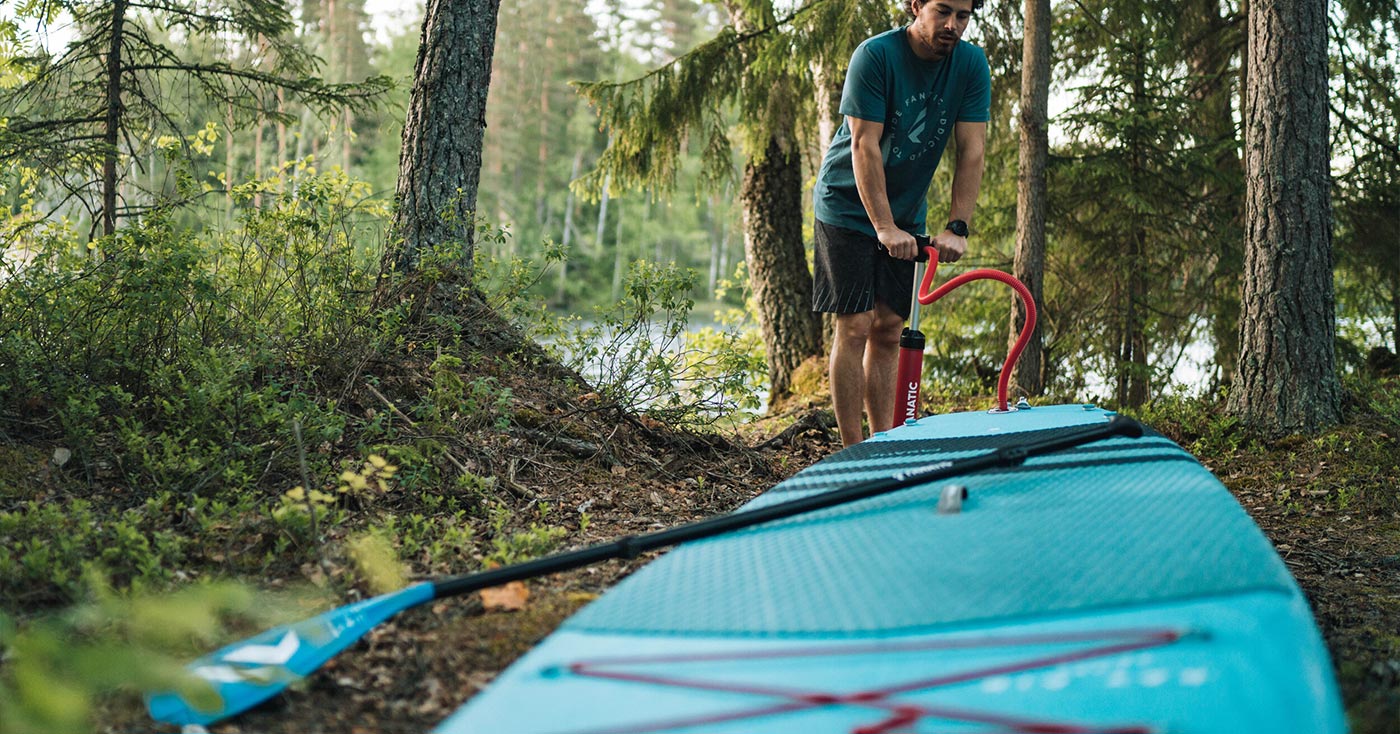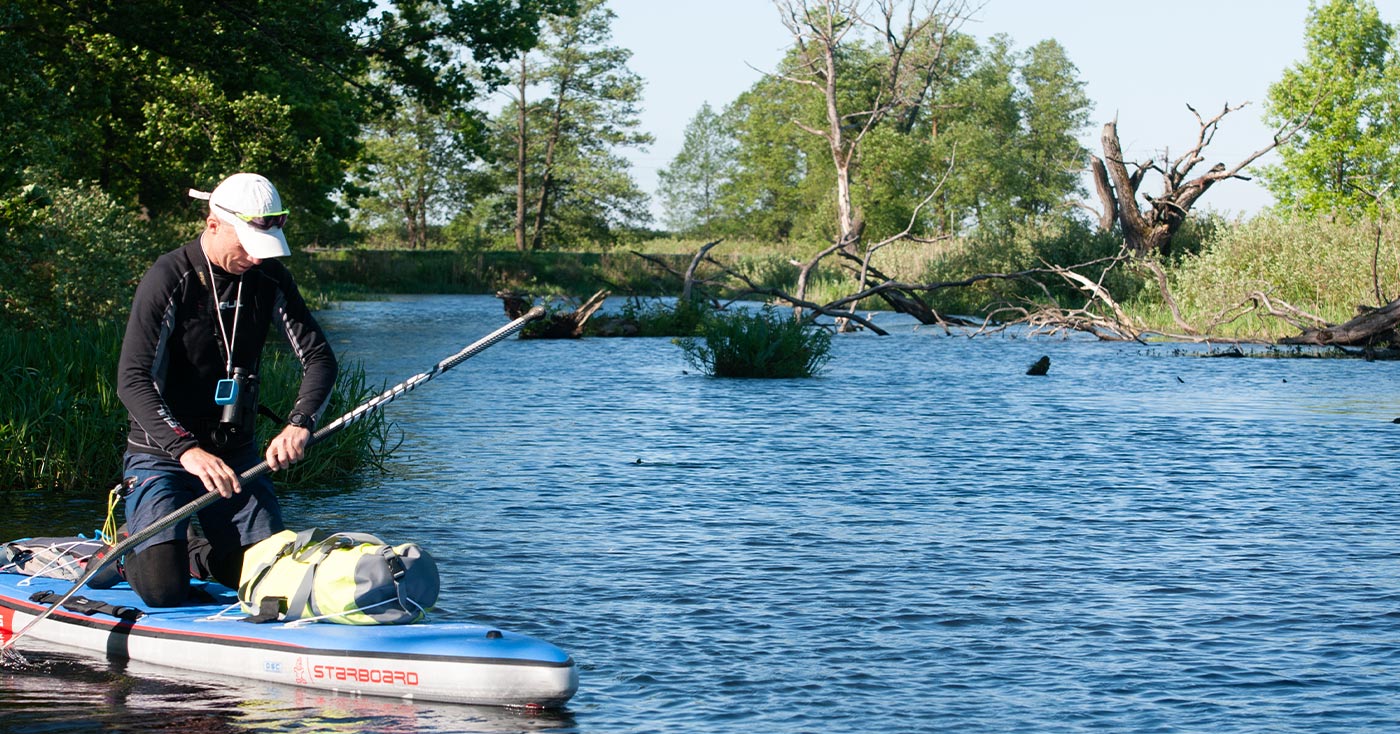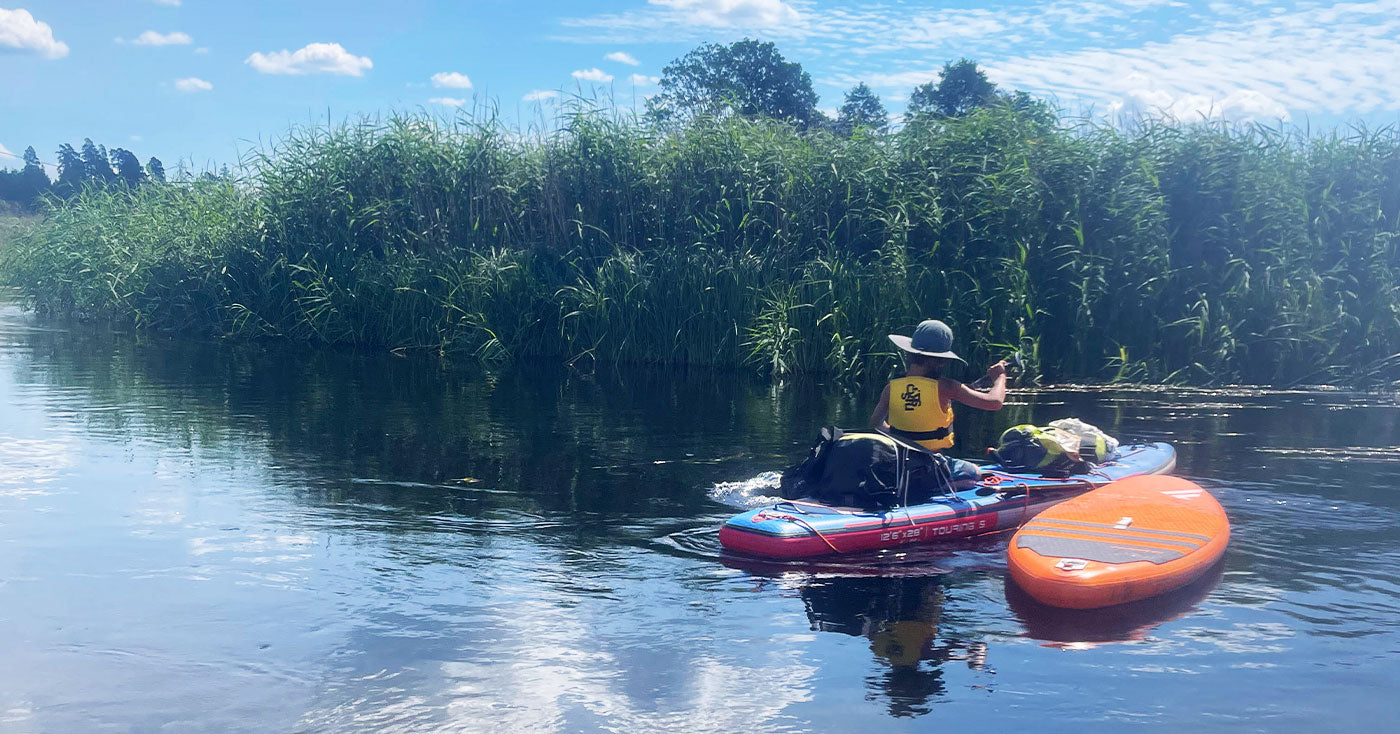
This is what the introductory SUP classes at Fun Wind look like
If you're not sure if SUP is the activity for you and you want to try this sport under the supervision of a specialist and with high-quality equipment, we invite you to our introductory classes.
Below we present the topics we cover during a 60-minute lesson.
I. Theoretical and practical part on the shore
1. preparing the equipment for departure
- checking the place for inflating the board (in the shade, preferably on a soft surface, check that there is no glass or other sharp objects)
- inflating the board (our position when inflating; using 2 pump speeds; remembering to set the valve correctly before starting to inflate)
- stabilizer mountings
- setting the paddle length
- securing luggage and equipment
2. carrying equipment
3. determining the area of activity
- visually
- landmarks
- planned time on the water (monitoring time and distance on the water with a watch or phone with GPS functions)
- group communication (voice, gestures, telephone)
- navigational obstacles, if any, discussed
- weather (air and water temperature, time until dusk, possible wind or storm warnings)
4. safety rules
- staying afloat (board with leash, life jacket)
- appropriate clothing (shoes, gloves and a neoprene wetsuit if it's cold)
- UV protection (sunscreen, lycra, baseball cap, glasses)
- hydration during water activities
- footwear to protect feet from cuts if the bottom or exits to the shore are unknown
- connectivity, i.e. a charged phone in the Aquapac case so that it does not get wet or drown
- visual signals for calling for help on the water (crossing arms above the head) and by telephone (Rescue application)
II. Practical part on the water
1. going down to the water
- we always first check the descent from a safety perspective, whether there is no glass, whether it is not slippery, whether there is no strong current near the shore
- checking the depth at the shore (e.g. with a paddle)
- fastening the leash before getting on the board
- holding the paddle
2. Balance on the board and start paddling
- kneeling and sitting
- standing:
- how to get up on a board from a kneeling position
- where we place our feet on the board
- forward and backward plank walking exercises
3. rowing
- how to hold a paddle
- keeping the oar close to the side
- rower's position (legs slightly bent at the knees, working the abdominal and back muscles, avoiding "pulling your arms towards the oar")
4. stopping in place
5. change of direction
- rowing on one side
- rowing "reverse"
- moving to the stern and reducing the length of the board's waterline
- slalom swimming (preferably between buoys)
6. emergency situations
- capsize and re-entry onto the board
- hitting an obstacle underwater with the fin
- using the phone (e.g. to take photos) while swimming


